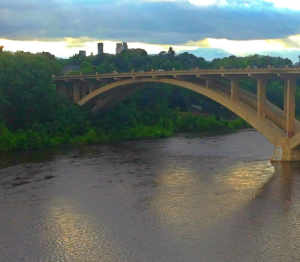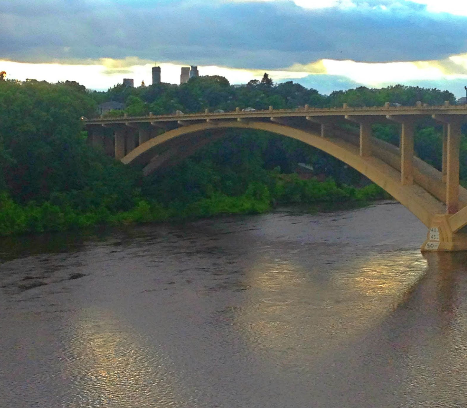Record-breaking rainfall in June caused flash flooding, road closures and damages to city infrastructure in the Twin Cities, making it difficult for some St. Thomas students and staff to get to campus over the past few weeks.
“I often run along the river road in the summer, and it’s clear something is not right. Everywhere you look there is rain water in the grass, roads are closed around campus and the water level on the Mississippi is as high as I have ever seen it,” junior Morgan McGowan said. 
As of July 1, the Mississippi River water level was at the moderate flood stage of 16.5 feet, but the level has decreased and will likely continue to do so, according to the National Weather Service.
St. Thomas geology professor Kevin Theissen, who lives near the river in Minneapolis, touched on the flooding issues caused by the recent rainfall.
“I have observed the ongoing flooding of Minnehaha Creek, Hiawatha Golf Course and Lake Nokomis,” Theissen said. “Folks in the UST community are from all over the metro area and beyond, and they and their families are experiencing the more significant and costly impacts of basement flooding in their homes, damage to roads and other infrastructure in their communities and problems with erosion and crop destruction on farm land.”
The evening of June 19 saw the greatest damage thus far of the summer when a 300-foot section of the Mississippi River bluffs over West River Parkway in Minneapolis came crashing down onto the road, stopping local traffic.
Senior Alex Smith was on his way to campus minutes after the bluff slid onto the parkway and was forced to change his route.
“I was coming from the University of Minnesota and had to take an alternative route after the mudslide had caused the parkway to close down. Sure enough, I saw it on the news later that evening,” Smith said.
A record-setting 4.13 inches of rain fell June 18 in St. Paul, the most amount of rain recorded in a 24-hour time span for the month of June in St. Paul. According to the Minnesota Department of Natural Resources, St. Paul received 11.36 inches of rainfall in June, four inches higher than the monthly average and the second highest in the city’s history, falling short of the 11.67 inches that fell in June of 1874.
McGowan said she has been frustrated with this summer’s weather.
“It’s doing a great job of ruining my summer plans,” McGowan said.
Travis Swan can be reached at swan9954@stthomas.edu.



